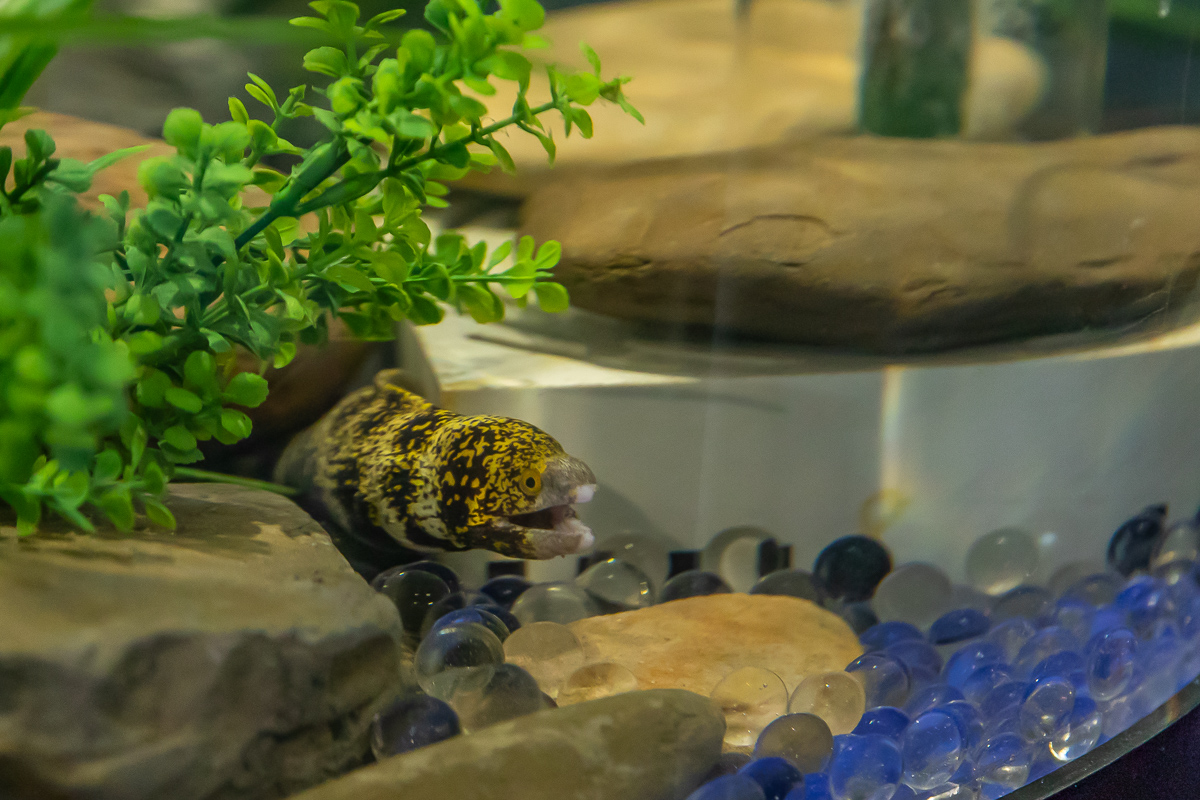
Being nocturnal along with having not the best swimming ability or eyesight, moray eels such as the zebra and snowflake eel are still very successful top predators. They play a key role in regulating the abundance and behaviour of creatures which reside with them in rocky, coral reefs in warm tropical waters.
Camouflage is essential for survival; the Zebra eel is mainly brown, and the Snowflake eel is yellow and white in colour. This makes it possible for them to hide from their potential predators within the rocks, coral and sand. The mucus they secrete over their scaleless skin, and their mouth can contain poisonous toxins which is another good defence mechanism.
Moray eels are carnivores which hunt and feed on crustaceans, sea urchins and molluscs. They may have poor eyesight but their excellent sense of smell makes them very successful at hunting. Their second set of jawed teeth or pharyngeal jaws (pictured below) at the back of their throat are also an advantage. They are blunt which makes them very suitable for grinding down their food. When hunting, these eels first latch onto their prey with their outer jaws and then push their pharyngeal jaws forward to grasp the prey and bring it back into the stomach. This is a unique process utilised only by these species of eels.

It is becoming apparent through ongoing research having a streamlined, serpentine shape with the dorsal fin running the length of the body gives these eels unusual and useful feeding techniques which are unavailable to conventionally shaped fish. They are known to crawl on land to scavenge for dead fish and even cooperate with other fish to find prey. Recent research and videos have also shown that morays are starting to tie their bodies into a ‘knot’ to extract food from a bait bag, while another moray used its tail as a 'paddle' to dislodge the food item.
Echidna nebulosa, Snowflake moray eel

Gymnomuraena zebra, Zebra moray eel
